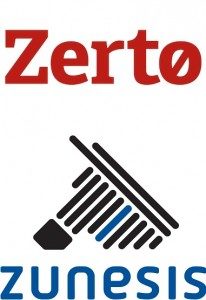It never ceases to amaze me. There’re the great big organizations who have million-dollar lobbies and healthy quarterly dividends. The CEO has a jet or six and from the outside looking in, things look like all their ducks are in a row. A facade is misleading. My last date was a facade, but that’s another subject all together. In other words, things are not always what they seem.
A Lack Of Business Continuity
Organizations spend millions and millions on their research & development (as they should), employee retention and many other pertinent tangibles and intangibles. However, I have noticed a significant gap in the investment in their business continuity. They may not even practice business continuity. They pay little or no attention to that gorilla in the room. Also known as a Disaster (Natural or Manual).
Now some of this is due to negligence and some of this is due to that 20-something mentality that one is bullet-proof. The big ‘D’ here is Denial; the fact that it can never happen to us. We’re too big and somebody will know what to do.
Well, that’s not always the case. If a catastrophe does happen (God forbid), an organization needs to have a contingency plan in place. They should also be able to quasi-predict the catastrophe before it actually happens.
The Cost of Downtime
Downtime in an IT infrastructure can cost an organization millions of dollars per every minute the infrastructure is down. That’s why maintenance windows are done at 1 AM and not during peak times. Could you imagine if Amazon went down on Cyber Monday? Yes, it’s an extreme example, but imagine if your organization went down.
Then ask yourself the following questions:
- What would happen?
- Would our clients be adversely affected?
- How much money would you lose?
- How much data would you lose?
- How valuable is that data to your organization?
- How are we going to get it back?
- Who do we call?
The list of questions is infinite. Your organization may not ever be able to be fully down. Imagine if a city’s fire department IT infrastructure went down? It could project total chaos.
Now that I have made my point on the seriousness of an IT infrastructure going down, it’s time to make my other point. That is business continuity.
Business Continuity- What is it?
Wikipedia defines Business Continuity as:
“ The process of creating systems of prevention and recovery to deal with potential threats to a company. In addition to prevention, the goal is to permit ongoing operation, before and during execution of disaster recovery.”
The keywords in that definition is “ongoing operation.” Floods, earthquakes, cyber-attacks, human error can all affect the ‘ongoing operation’ of an organization. Having backups (quite possibly more than one) in place to keep the lights on is vital. This is a worthy investment and by investing in a Disaster Recovery plan may make you cringe, imagine the investment you would have to make if you didn’t.
When did Noah build the ark?
Before the storm….Before the storm….
Zunesis has an IT Health Check service which is quick and not physically painful! Let us come in, understand your infrastructure and help you prevent that 10,000-year flood. Click here for more information!
Enterprise DR is like having insurance for your cell phone.
Thank you, Kevin Kornblith, for this analogy.
Some people can lose a phone, and if they take a week to get a new one, it’s no big deal. Others might drop a phone in the sink and be okay if it takes a couple hours to drive to a store to pick up a new one. Then, there are people who, when they hear that dreaded cruuuunch of a broken phone, they need someone to slap a new phone in their hand immediately. This is how we see disaster recovery solutions today.
 You’ve got storage based snapshots, which are often performance impacting and confined to finite windows to limit their collateral damage. As a result, they don’t run often; and it’s very common to have a snapshot once every 24 hours. Although cost effective, you expose yourself to losing 23:59 hours of data. In a real disaster and failover, the environment would still need to be pieced back together.
You’ve got storage based snapshots, which are often performance impacting and confined to finite windows to limit their collateral damage. As a result, they don’t run often; and it’s very common to have a snapshot once every 24 hours. Although cost effective, you expose yourself to losing 23:59 hours of data. In a real disaster and failover, the environment would still need to be pieced back together.
Business Continuity systems, like Veeam, do an excellent job at protecting data, and their recovery points continue to shrink. They’re now down to a 15-minute Recovery Point, which is excellent for their continuity role. However, if you’re in an industry with a high cost of downtime, you might still need something better. Active-Active systems are an option – but wow, you’re going to pay for it.
For a fraction of the cost of active-active, you should use Zerto. Zerto is hardware and hypervisor agnostic with Recovery Points of 5 seconds and Recovery Times of 10 minutes. It also has a couple of bonuses that can be used while you wait and hope to never need a true DR solution.
Zerto can be used to migrate VMs. Since it’s hardware and hypervisor agnostic, you can migrate from AWS to Azure to any storage array. Its non-disruptive DR testing is fantastic, and you can spin off nearly real-time environments for test dev. Plus, it’s a great tool for cryptolocker or ransomware mitigation – just “roll-back” to the second before an attack.
Enterprise DR is like having insurance for your cell phone.
Thank you, Kevin Kornblith, for this analogy.
Some people can lose a phone, and if they take a week to get a new one, it’s no big deal. Others might drop a phone in the sink and be okay if it takes a couple hours to drive to a store to pick up a new one. Then, there are people who, when they hear that dreaded cruuuunch of a broken phone, they need someone to slap a new phone in their hand immediately. This is how we see disaster recovery solutions today.
 You’ve got storage based snapshots, which are often performance impacting and confined to finite windows to limit their collateral damage. As a result, they don’t run often; and it’s very common to have a snapshot once every 24 hours. Although cost effective, you expose yourself to losing 23:59 hours of data. In a real disaster and failover, the environment would still need to be pieced back together.
You’ve got storage based snapshots, which are often performance impacting and confined to finite windows to limit their collateral damage. As a result, they don’t run often; and it’s very common to have a snapshot once every 24 hours. Although cost effective, you expose yourself to losing 23:59 hours of data. In a real disaster and failover, the environment would still need to be pieced back together.
Business Continuity systems, like Veeam, do an excellent job at protecting data, and their recovery points continue to shrink. They’re now down to a 15-minute Recovery Point, which is excellent for their continuity role. However, if you’re in an industry with a high cost of downtime, you might still need something better. Active-Active systems are an option – but wow, you’re going to pay for it.
For a fraction of the cost of active-active, you should use Zerto. Zerto is hardware and hypervisor agnostic with Recovery Points of 5 seconds and Recovery Times of 10 minutes. It also has a couple of bonuses that can be used while you wait and hope to never need a true DR solution.
Zerto can be used to migrate VMs. Since it’s hardware and hypervisor agnostic, you can migrate from AWS to Azure to any storage array. Its non-disruptive DR testing is fantastic, and you can spin off nearly real-time environments for test dev. Plus, it’s a great tool for cryptolocker or ransomware mitigation – just “roll-back” to the second before an attack.
Zunesis partners with Zerto to deliver comprehensive BC/DR for virtualized environments.
Denver, CO (PRWEB) July 29, 2015
 Zunesis, Inc. announced today that they have joined the Zerto Alliance Partner (ZAP) Program to offer clients award-winning Zerto Virtual Replication. Zerto’s hypervisor-based solution offers the only business continuity and disaster recovery (BC/DR) built for protecting mission-critical applications deployed in virtualized data centers and cloud environments. Under the program, Zunesis has access to the tools and support to deliver unparalleled, real-time, cost-effective BC/DR to enterprises of all sizes.
Zunesis, Inc. announced today that they have joined the Zerto Alliance Partner (ZAP) Program to offer clients award-winning Zerto Virtual Replication. Zerto’s hypervisor-based solution offers the only business continuity and disaster recovery (BC/DR) built for protecting mission-critical applications deployed in virtualized data centers and cloud environments. Under the program, Zunesis has access to the tools and support to deliver unparalleled, real-time, cost-effective BC/DR to enterprises of all sizes.
“Zerto combines the enterprise-class features of physical replication with the flexibility, ease of management, and scalability of virtual environments,” said Sean Milner, Regional Director, Zerto. “We are proud to collaborate with some of the most innovative and advanced organizations in the world to develop, sell, support, integrate and deliver enterprise-class BC/ DR solutions.”
As one of the leading IT solution providers in the Rocky Mountain Region, Zunesis is thrilled to be able to provide their clients with stable business continuity plans through their new partnership with Zerto.
“We know that our clients need assurance that their mission-critical applications are protected,” said Zunesis CEO, Steve Shaffer. “Their businesses lose money every minute that their systems are down, so they look to us to guarantee that their applications will be protected when the storm comes. We are excited to partner with Zerto because we know they provide that assurance.”
About Zunesis
Zunesis is a leading IT solution provider with locations in Colorado and Nevada. Our vision centers around an intense focus on serving our customers and bringing value to their business through strategic IT solutions. In April 2015, Zunesis was named to the CRN TechElite 250 for the 6th consecutive year as a best-of-breed solution provider with deep technical expertise and premier certifications.
About Zerto
Zerto is committed to keeping enterprise and cloud IT running 24/7 by providing innovative, simple, reliable and scalable business continuity software solutions. Through the Zerto Cloud Continuity Platform, organizations can seamlessly move and protect virtualized workloads between public, private and hybrid clouds. The company’s flagship product, Zerto Virtual Replication, has become the standard for protection, recovery and migration of applications in cloud and virtualized data centers, and won numerous awards, including Best of Show at VMworld 2011, Best of VMworld Europe 2014, as well as 2011, 2012 and 2013 Product of the Year Awards for its innovative hypervisor-based replication approach. For more information, go to http://www.zerto.com.

